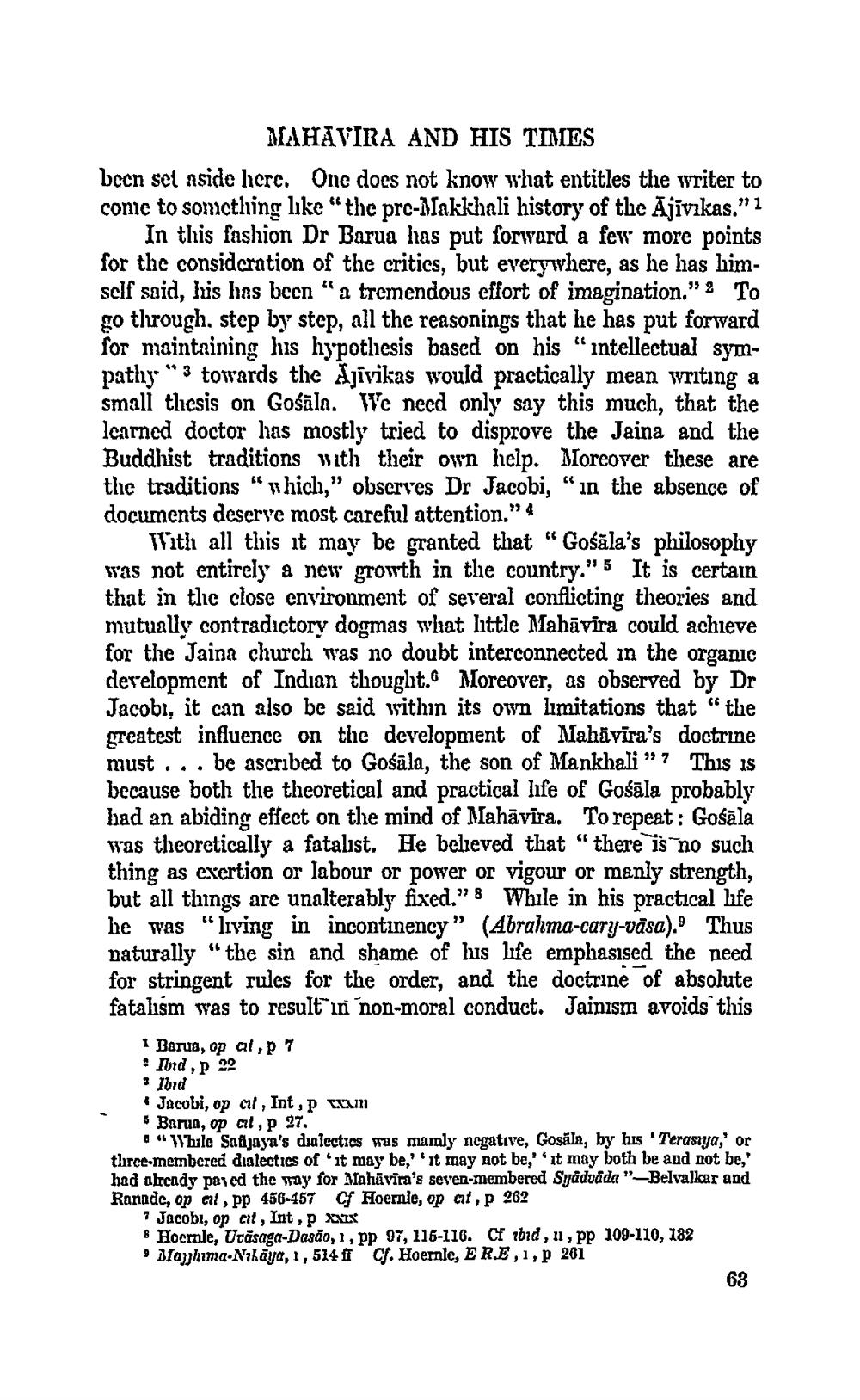________________ MAHAVIRA AND HIS TIMES becn sct aside herc. One does not know what entitles the writer to come to somcthing like "the pre-Nakkhali history of the Ajivikas." 1 In this fashion Dr Barua has put forward a few more points for the consideration of the critics, but everywhere, as he has himself said, his has been "a tremendous effort of imagination." 2 To go through. step by step, all the reasonings that he has put forward for maintaining his hypothesis based on his "intellectual sympathy" 3 towards the Ajivikas would practically mean writing a small thesis on Gosala. Ve need only say this much, that the Icarned doctor has mostly tried to disprove the Jaina and the Buddhist traditions with their own help. Moreover these are the traditions "shich," observes Dr Jacobi, " in the absence of documents deserve most careful attention." 4 Thith all this it may be granted that "Gosala's philosophy was not entirely a ner growth in the country." 5 It is certain that in the close environment of several conflicting theories and mutually contradictory dogmas what little Mahivira could achieve for the Jaina church was no doubt interconnected in the organic development of Indian thought. Moreover, as observed by Dr Jacobi, it can also be said within its own limitations that "the greatest influence on the development of Mahavira's doctrine must ... be ascribed to Gosala, the son of Mankhali"? This is because both the theoretical and practical life of Gosala probably had an abiding effect on the mind of Mahavira. To repeat: Gosala Tas theoretically a fatalist. He believed that "there is no such thing as exertion or labour or power or vigour or manly strength, but all things are unalterably fixed." While in his practical hfe he was "living in incontinency" (Abrahma-cary-vasa). Thus naturally "the sin and shame of lus life emphasised the need for stringent rules for the order, and the doctrine of absolute fatalism was to result in non-moral conduct. Jainism avoids this 1 Barus, op al, 7 * Turd, p 22 * Jord Jacobi, op al, Int , kun s Bama, op cit, p 27. 6 "While Sanjaya's dialectics was mainly negative, Gosala, by bus 'Terasiya,' or thirce-membered dialectics of it may be, it may not be, it may both be and not be,' had already paved the way for Mahavira's seven-membered Syadoada"-Belvalkar and Rannde, op al, pp 456-457 Cf Hoernle, op al, p 262 ? Jacobi, op cit, Int , p XXXX 8 Hoornle, Urasaga-Dasao, 1, pp 97, 115-116. CT id, 11, pp 109-110, 182 . Dajjhima-Nilaya, 1, 574 Cl. Hoernle, E RE,1, p 261 68




